
Through our Underground Explorers Program, we collaborate with researchers and local communities to map mycorrhizal fungal networks in their home ecosystems.

play video
apply for an Underground explorers grant
Applications are currently closed. Please check back soon.

Mycobiome Diversity of Treeline Ecotones in the North Western Himalaya (MD-TEN WH)
Northwestern Himalaya, India
2023

Mycobiome Diversity of Treeline Ecotones in the North Western Himalaya (MD-TEN WH)
Aabroo Fatima Qazi
Northwestern Himalaya, India
Cohort:
2023
project abstract
The alpine treeline in the north-western Himalaya forms a distinct ecological boundary between the upper limit of closed-canopy forests and the alpine vegetation. Trees in this ecotone are highly sensitive to climate change, and soil microbes can help relieve climatic stress for them. Investigating how the soil mycobiome responds to environmental changes, including shifts in temperature and precipitation patterns associated with climate change, can help predict and mitigate the impacts of climate change on soil fertility, carbon storage, and ecosystem stability. In this context, the documentation of the soil mycobiome within the treeline ecotone of climate-sensitive Himalayan landscapes is of utmost importance. In the present project, we will collect baseline data on the soil mycobiome using molecular methods (DNA extraction from soil, its amplification using specific primers, and subsequent data analysis). This will help us gain information with potential use in monitoring and assessing ecosystem functionality and tracking the ecosystem impact of impending global climate change. It can also be used to understand how the diversity, distribution, and functionality of the soil mycobiome itself may be affected by the changing climate. The valuable insights gained from the proposed project can be applied to ecosystem restoration programs.
Photo by Akshat Vats on Unsplash

Diversity Of Soil Culturable Fungi and Mycorrhizal mapping In the Rwenzori Tropical Montane Cloud Forest of Uganda
Uganda
2025

Diversity Of Soil Culturable Fungi and Mycorrhizal mapping In the Rwenzori Tropical Montane Cloud Forest of Uganda
Adeyinka Odebode
Uganda
Cohort:
2025
project abstract
Rwenzori Tropical montane cloud forest exhibit a high diversity of plant species and communities, as a result of high humidity and mild temperatures that create favorable conditions for the coexistence of temperate and Neotropical flora. The forest has five distinct vegetation zones, several endangered species and the richest montane flora in Africa. Hence, it is necessary to determine how mycorrhizal fungi community diversity and structure differ in the different forests. The project will assess the diversity of soil fungi through meta-barcoding of soil in these cloud forests to know the true diversity that exists through mycorrhizal mapping.
Photo by Keith Kasaija on Unsplash

Exploring Arbuscular Mycorrhizal Biodiversity In Grassland Ecosystems In Uruguay
URUGUAY
2022

Exploring Arbuscular Mycorrhizal Biodiversity In Grassland Ecosystems In Uruguay
Adriana Montañez
URUGUAY
Cohort:
2022
project abstract
Uruguay is part of the temperate subhumid grasslands in the eastern part of South America. Our territory is described as Campos within Biome Pampa according to physiognomic, geomorphologic, and edaphic features. This region shows year-round photosynthetic activity and represents one of the world's most diverse, largest, and less transformed grassland areas. Despite their apparent physiognomic homogeneity, these grasslands hold high species diversity, having grasses as the dominant life form except for a few scattered shrubs and trees. Actually, Uruguay lost 10% of its pastures. A regional mapping work of the Pampa biome (Brazil, Argentina, and Uruguay) shows the reduction of the grassland ecosystem over two decades. Our country's main driver of pasture losses was agriculture, followed by forestry and invasive plants.
It is widely recognized the key role of arbuscular mycorrhizal fungi (AMF) in terrestrial ecosystems, as they regulate nutrient and carbon cycles influencing soil structure, plant community, and ecosystem multifunctionality. The role of mycorrhizal symbiosis has been usually related to its impact on the plant mineral nutrition However, it has been demonstrated that this symbiotic process has a key role in ecosystem stability and restauration. AMF is a mutualistic microorganism that links biotic and abiotic components of ecosystems, mediating plant competition and nutrient distribution. Our question is, within Campos, which factors are driving and modulating AMF biodiversity? Four sites representing conserved grasslands will be sampled; we will combine different approaches to understanding AMF diversity by looking at the links between AMF and plant community structure, geochemistry, and soil microbial community interactions.
Three hypotheses are proposed: (1) AMF diversity is affected by soil type, and physicochemical environmental conditions; (2) AMF diversity responds to changes in above-ground plant community diversity; and (3) AMF diversity is affected by the interactions with soil microbial communities (fungi and bacteria) that coexist in the same site.
During this project, motivation to local communities will be through seminars and talks. Local communities, especially students from rural schools, could keep the plant communities under observation within passive conservation and restoration mini-projects aimed to involve them in a change of mind about soil health and below- and above-ground biodiversity.
Photo by luciano paris on Unsplash

Regional and large scale patterns of soil fungi in the Amazon forest of Colombia
AMAZON FOREST OF COLOMBIA
2022

Regional and large scale patterns of soil fungi in the Amazon forest of Colombia
Aida Marcela Vasco
AMAZON FOREST OF COLOMBIA
Cohort:
2022
project abstract
The Amazon Region has a large number of ecosystems, which house a high biotic diversity. It is considered a hotspot for soil fungi and protects a high level of fungal endemism (Tedersoo et al. 2014, 2022). The project intends to study soil fungal communities, including arbuscular mycorrhizae and ectomycorrhizae, at three contrasting and distant points in the Colombian Amazon, which will allow us to learn more about the distribution patterns of soil fungal communities, and in particularly mycorrhizae. In addition to studying white-sand forests and terra firme forests, alluvial plain or várzea forests will be included, which have not yet been studied.
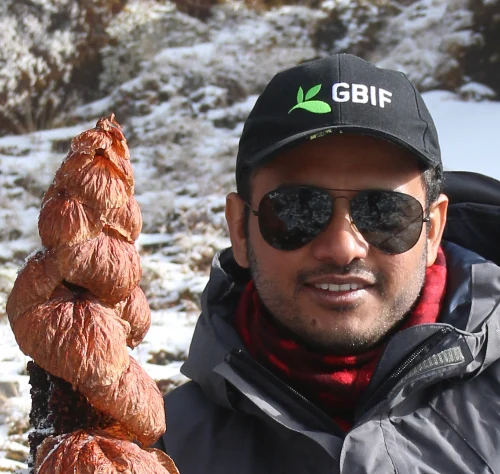
Exploring the Role of Mycorrhizal Communities in Sustaining Rangeland Ecosystems in the Hindu Kush Himalayan Region.
Nepal
2025

Exploring the Role of Mycorrhizal Communities in Sustaining Rangeland Ecosystems in the Hindu Kush Himalayan Region.
Ajay Neupane
Nepal
Cohort:
2025
project abstract
This proposal aims to investigate the role of mycorrhizal communities in sustaining rangeland ecosystems in Khaptad National Park (KNP), Nepal, within the Hindu Kush Himalayan region. Despite rangelands covering 12% of Nepal's area and supporting highland communities, they are under-researched and face significant degradation from overgrazing, shrub encroachment, and anthropogenic pressures. This research aims to fill this gap by investigating three key hypotheses: 1) Mycorrhizal diversity in highland rangelands is linked to native plant species composition and ecosystem function; 2) Mycorrhizal fungi enhance soil fertility and plant resilience through nutrient cycling; and 3) Mycorrhiza contribute to the stability and resilience of plant communities under increasing anthropogenic pressures. The study will involve collecting 50 soil samples from five stratified sites within KNP, based on vegetation types and disturbance gradients. The findings are expected to have significant local, regional, and global impacts, including updating Nepal's national fungal checklist, informing conservation strategies like the Nepal National Biodiversity and Action Plan (NBSAP), and developing awareness materials on wild mushrooms. Ultimately, this project seeks to integrate fungal ecology into sustainable rangeland management policies and enhance local community awareness of the importance of mycorrhiza for their livelihoods.
Photo by Nirajan Dhakal on Unsplash

Mycorrhizal fungal diversity on savanna palm swamps in the Cerrado biome
Brazil
2024

Mycorrhizal fungal diversity on savanna palm swamps in the Cerrado biome
Alessandra Monteiro de Paula
Brazil
Cohort:
2024
project abstract
Among the phytophysiognomies of the Cerrado biome, the second most threatened biome in Brazil, palm swamps represent the most sensitive areas to human intervention, mainly due to the ecosystem services they perform as carbon storage (carbon stock in the soil) and in the regulation and availability of water. Land use conversion can alter moisture levels, soil characteristics, patterns of environmental heterogeneity, vegetation composition and microbial diversity, especially the AM community. Consequently, patterns and processes can be changed, compromising the functioning of the ecosystem. The project hypothesizes that the diversity of arbuscular mycorrhizal fungi in palm swamp areas varies depending on the water availability in the soil, estimating greater diversity in more drained environments. The analysis of arbuscular mycorrhizal fungi diversity will contribute to the maintenance and resilience of palm swamp areas in the face of environmental changes. Including the identification of species that can favor the establishment of native plant species in areas undergoing regeneration and recovery.
Photo by Rogean James Caleffi on Unsplash

The mycorrhizal fungus of the Argentine Mesopotamia is being modified by introduced forest
Mesopotamia Argentina; Misiones, Corrientes y Entre Ríos
2023

The mycorrhizal fungus of the Argentine Mesopotamia is being modified by introduced forest
Alex Ernesto Somrau
Mesopotamia Argentina; Misiones, Corrientes y Entre Ríos
Cohort:
2023
project abstract
Argentine Mesopotamia is a region composed of 3 provinces and 3 very different ecoregions: the Espinal Ecoregion; the Southern Cone Mesopotamian Savannah, where the Iberá Wetlands are located, the second largest wetland in the world; and the Upper Paraná Atlantic Forest, where one of the 7 natural wonders of the world, the Iguazú Falls is located, and where 52% of the country's biodiversity is found. Despite the ecological importance of this region, it concentrates more than 75% of the country's afforestation with species introduced more than 80 years ago, with pine and eucalyptus, two exotic species with mycorrhizal associations, being the most cultivated. However, it is not known how many mycorrhizal species have been introduced and how they have affected the native fungi. Therefore, the aim of this project is to analyze the diversity of exotic and native mycorrhizae in order to assess the impact of afforestation on native mycorrhizal diversity and to initiate awareness and mitigation measures.
Photo by Ignacio Aguilar on Unsplash

Submerged half of the hidden kIngdom: Mycorrhizal fungal diversity in mangrove ecosystems across contrasting marine coastlines in the United Arab EmIrates
United Arab Emirates (UAE)
2024

Submerged half of the hidden kIngdom: Mycorrhizal fungal diversity in mangrove ecosystems across contrasting marine coastlines in the United Arab EmIrates
Amit Kumar
United Arab Emirates (UAE)
Cohort:
2024
project abstract
This research investigates the fungal diversity with special emphasis on mycorrhizal fungal diversity, within the dominant mangrove species in the United Arab Emirates (UAE). Despite their significance, mangrove ecosystems along the UAE coasts are often overlooked as ecological hotspots, however, they play important ecological and cultural roles while contributing to climate change mitigation. Through a comprehensive examination of fungal communities across diverse habitats characterized by varying environmental conditions, the project aims to understand the ecological adaptations and compositions of mycorrhizal fungi within these ecosystems. Furthermore, the study aims to identify core mycorrhizal fungal taxa that may be conserved across different environments, providing crucial clues for conservation strategies.
Photo by Saj Shafique on Unsplash

Amazonian forest degradation: impacts on soil fungi
Pará State, Amazonian Basin, Brazil
2024

Amazonian forest degradation: impacts on soil fungi
Andressa Monteiro Venturini
Pará State, Amazonian Basin, Brazil
Cohort:
2024
project abstract
The Brazilian Amazon is facing unprecedented threats, including increasing deforestation and degradation (fires, extreme droughts, timber extraction, and edge effects) that collectively impact half of the original forest area. Amazonian soil microbes are sensitive indicators of land conversion, which has been linked to a rise in microbial methane emissions and antibiotic-resistant genes. However, soil fungal communities have been neglected in land-use studies in the region, with inconsistent results across publications. Additionally, their responses to forest degradation are still unknown. Our goal is to address these gaps by evaluating total and arbuscular mycorrhizal fungal communities in soils from the Eastern Brazilian Amazon. Samplings will be conducted in a natural forest and forests undergoing various degradation processes, as well as in a pasture and a soybean field. Our project will help elucidate the intricate connections among forest degradation, soil microbiome, and soil health, contributing to the conservation and sustainable management of the Amazon biome.
Photo by Vinicius Löw on Unsplash

Metabarcoding of soil fungi from Humid and dry forests in Madagascar
Maromizaha, Ranomafana, Kirindy Mitea - Madagascar
2023

Metabarcoding of soil fungi from Humid and dry forests in Madagascar
Anna Berthe Ralaiveloarisoa
Maromizaha, Ranomafana, Kirindy Mitea - Madagascar
Cohort:
2023
project abstract
The number of fungal species in Madagascar is unknown. Ralaiveloarisoa (2022) estimated that there might be as many as 84,000 – 140,000 species in Madagascar while less than 1000 species (less than 2%) have been described. Many of these species are already under threat due to slash and burn agriculture and might disappear without knowing them. Thus, metabarcoding of the fungal community would be imperative to increase the knowledge on Malagasy fungi more rapidly than is possible with the traditional methods before their vanish. The aim is to produce DNA barcodes of the whole fungal community within a sample using high-throughput DNA sequencing technology and to understand the distribution and the ecological roles of fungi quicker. The results will allow us to compare the fungal diversity from the humid forests in the center and eastern Madagascar to those present in the dry forest in the South-Western. The data produced during this project will increase the number of sequences present in the public repositories so that they also can be used to evaluate the conservation status of Malagasy species.
Photo by Sergey Zhesterev on Unsplash

Exploring the ectomycorrhizal community associated with restinga, forest and Caatinga moist enclaves in Paraíba
Atlantic Forest and Caatinga enclave moist forest, State of Paraíba, Brazil
2024

Exploring the ectomycorrhizal community associated with restinga, forest and Caatinga moist enclaves in Paraíba
Ariadne Nóbrega Marinho Furtado
Atlantic Forest and Caatinga enclave moist forest, State of Paraíba, Brazil
Cohort:
2024
project abstract
Home to several endemic species, less than 10% of Paraíba's territory, in Brazil, is officially protected, including 6% of the Atlantic Forest and only 1.2% of the former Caatinga formation. Deforestation, mining, excessive extraction of forest products, fires, animal overload are some of the actions that have led to greater fragmentation and threatened the survival of restinga, fragments forestry and Caatinga enclaves in the state. Knowing the local fungal communities and how they are interrelated between various environments will allow us to identify potential taxa to be used in restoration strategies for areas already so affected. We propose three hypotheses: 1) ectomycorrhizal fungal community is higher in Caatinga enclave moist regions than in restinga and forest; 2) the composition of fungi in restinga soils is distinct from forest soils, with some parallels regarding more resilient species; 3) the Northeast restinga has a more diverse ectomycorrhizal community than South Brazil. This hypothesis will be tested using data obtained by the SPUN Grantee project led by Dr. Maria Alice Neves (How are mycorrhizae communities distributed in the mangrove, restinga and forest in Santa Catarina Island?). The data produced during this project will allow us to understand how the habitat determines the ectomycorrhizal diversity gradient and how soil communities are structured in these ecosystems. We also hope to provide a more complete overview of restinga fungal communities by combining data generated in two regions of the country. The development of this proposal will improve our understanding of communities by complementing previously conducted macrofungal taxonomy studies, as well as allowing the training of specialists in the study of mycorrhizae, promoting the formation of research groups focused on ectomycorrhizal diversity.
Photo by Ronaldo de Oliveira on Unsplash

Ectomycorrhizal Diversity from Himalayan Forests of Pakistan
Pakistan
2023

Ectomycorrhizal Diversity from Himalayan Forests of Pakistan
Arooj Naseer
Pakistan
Cohort:
2023
project abstract
The Himalaya Hindu Kush mountain range is a biodiversity hotspot, yet underexplored for soil fungal diversity. It exhibits broad environmental gradients in elevation as well as geographical and temporal gradients in precipitation. These mountains host many ectomycorrhizal trees like oaks, pines, cedars. These sites will be explored for ectomycorrhizal fungi (EMF) including dry and moist temperate forests in Pakistan. The moist temperate forests are located in Kaghan and Bahrian with the dry temperate forests located in Kalam and Parachinar. The ectomycorrhizal fungi will be identified by amplification of ITS as well as LSU region (SSU, rpb if needed). The soil samples will be analyzed by illumina sequencing. Repeating sampling throughout the year will further determine differences among seasons, specifically in relation to the monsoon which is a key climatic event in the region where 80 % of yearly precipitation falls in 3 months. The contrasting precipitation patterns among the habitats and seasons will identify the driving forces for distribution of EMF taxa in relation to this key environmental parameter. The data obtained will unveil the hidden treasure of below-ground plant root symbiotic fungal taxa.
Photo by Saravanan Rajaraman on Unsplash

Variation in root and soil fungal communities associated with the tropical conifer Podocarpus in Panama
Panama
2024

Variation in root and soil fungal communities associated with the tropical conifer Podocarpus in Panama
Astrid Ferrer
Panama
Cohort:
2024
project abstract
The Podocarpaceae is a family of conifers that occurs in closed canopy forests throughout the tropics, typically on isolated patches of low fertility soil. The basis for this association is unclear. However, among their adaptations to nutrient limitation is the presence of nodulated fine roots. While there is no convincing evidence that N fixation takes place in these structures, preliminary results show nodules are heavily colonized by fungi including arbuscular mycorrhizas and abundant Leotiomycetes. We will take advantage of the diverse habitats occupied by podocarp species in Panama to sequence and identify symbionts present in roots and surrounding soil at six sites on coastal Caribbean and Pacific islands, and in lowland and montane forests. These sites represent almost the full range of climate types in which Podocarpus occur in the tropics. We will also determine whether nodules support fungal communities that are distinct from adjacent un-nodulated fine root sections. Our research team includes graduate students and Panamanian collaborators engaged in the conservation and management of Panama’s rare plants. The results of this study will provide insights into nodule function in podocarps and into how these unusual plants have survived in angiosperm dominated tropical forests.
Photo by Jaunathan Gagnon on Unsplash
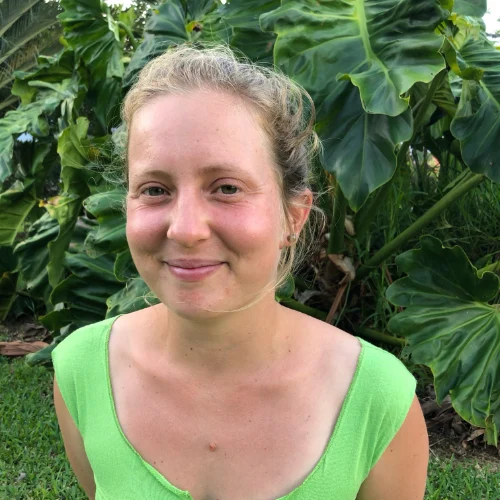
Mycorrhizal fungal diversity in the West Indian Islands.
Martinique
2025

Mycorrhizal fungal diversity in the West Indian Islands.
Ayla Mongès
Martinique
Cohort:
2025
project abstract
As a Caribbean island, Martinique is one of 36 global biodiversity hotspots. Its biodiversity is recognized as one of the richest and most endangered on the planet. The northern end of the island catches most of the rainfall and is heavily forested, the terrain is mostly mountainous due to volcanic origin. The southern part is drier and dominated by savanna-like bushland, but also mangrove ecosystems that support a vast array of marine and terrestrial species. Banana and sugar cane farming are the main agricultural activities, but people depend mostly on subsistence crops cultivated in permaculture, in remote places, which makes them particularly dependent on soil health and biodiversity.As an island isolated from the continent, Martinique has an endemism rate above 10%. However, it is not far enough from the continent not to be subject to species exchanges. The fungal diversity in the soil or on epiphyte roots is probably following the same pattern with some endemism, but also similar species as found in Central and South America. We also expect a large diversity of fungi according to the very diverse ecosystems found is the island.
Photo by Teddy Charti on Unsplash
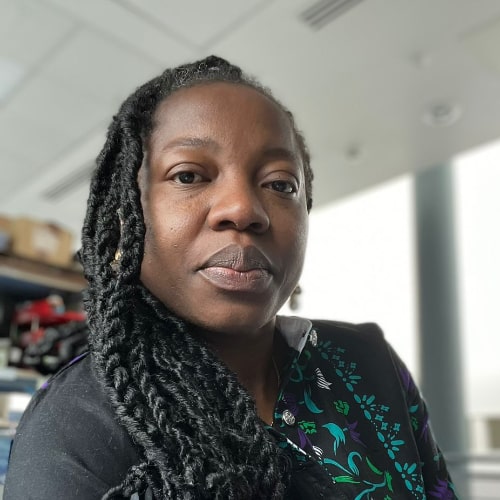
Spatial Variability of Arbuscular Mycorrhizal Fungi in Azo Dye Degraded Ecosystem in Nigeria
Nigeria
2025

Spatial Variability of Arbuscular Mycorrhizal Fungi in Azo Dye Degraded Ecosystem in Nigeria
Bolaji Thanni
Nigeria
Cohort:
2025
project abstract
Mycorrhizal diversity and composition can serve as natural indicators of pollution due to their sensitivity to environmental stress. A decrease in richness can indicate pollution levels, while a shift in community composition can indicate the severity of contamination.This study will provide data for local conservation banks and serves as a bio-monitoring tool to assess soil health.By highlighting the impact of textile effluents, the findings can encourage the adoption of eco-friendly dyes, promoting soil restoration and sustainable practices. In addition, the outcome of the research can help local advocating groups advocate for stricter regulations on waste disposal.
Photo by Kamal Sadiq Adam on Unsplash

Arbuscular Mycorrhizal Fungi in soil and litter under degradation effects in the Brazilian Amazon
Amazon Forest, Brazil
2023

Arbuscular Mycorrhizal Fungi in soil and litter under degradation effects in the Brazilian Amazon
Bruno Tomio Goto
Amazon Forest, Brazil
Cohort:
2023
project abstract
The project aims to answer the following questions: (i) how are Arbuscular Mycorrhizal Fungal (AMF) communities structured along native and impacted (degraded) areas of southern Amazon? (ii) AMF inhabit and colonize the Amazon leaf litter? (iii) how AMF communities differ between the soil and the adjacent litter? (iv) what is the degree of loss of diversity and functional groups between pristine and degraded areas - What is the impact of degradation? and (v) which and how soil and litter properties can influence the composition of AMF communities under different conservation conditions? The project represents a pioneering study on environmental sequencing of mycorrhizal fungi in soil and litter in the Amazon. The Amazon harbors one of the largest shares of global biodiversity, especially in plant species that can contribute to a huge diversity of microorganisms in the soil and litter. However, it is the Brazilian biome with the fewest diversity inventories for many groups of fungi, such as AMF, especially in the south portion of Amazon, where no work has been effectively published.
Photo by Nathalia Segato on Unsplash

Ectomycorrhizas of Mongolian boreal forests
Mongolia
2022

Ectomycorrhizas of Mongolian boreal forests
Burenjargal Otgonsuren
Mongolia
Cohort:
2022
project abstract
The boreal forests of Mongolia are on the southern edge of the Taiga and form a transition to the forest-steppe biome. The forests are composed of mainly Siberian larch (Larix sibirica), Siberian pine (Pinus sibirica), Scots pine (Pinus sylvestris), Japanese white pine (Betula platyphylla) and Siberian spruce (Picea obovate), and experience extremely low winter temperatures with deep soil freezing, and are strongly limited by precipitation.
There are few published investigations of ectomycorrhizal communities in Mongolian forests, however it is known from investigations in other biomes that some of the tree genera have narrow range ectomycorrhizal taxa. In this project we will investigated the ectomycorrhizal communities in mixed and single species forests of in the Bogd Khan protected area, in Umnudelger, Binder soum, Khentii province, and in the Burkhan Khaldun World Heritage Site. Whereas the Bogd Khan protected area is close to Ulaanbaatar, the Burkhan Khaldun World Heritage Site is a remote pristine area. At these sites, we will collect soils and fine roots, and assess the ectomycorrhizal community in soils using metagenomics. The ectomycorrhizal community on fine roots will be assessed by morphotyping the ectomycorrhizas, and the final identification using DNA sequences. We predict and in these extreme conditions a number of unique ectomycorrhizal taxa will be identified. The project will be carried out at the Mongolian University of Life Sciences, and at the Institute of Forest Ecology at BOKU, Vienna.
Photo by Sane Sodbayar on Unsplash

Diversity of arbuscular mycorrhizal fungi in the eastern Brazilian Amazon
Amazon biome, Maranhão state, Brazil
2024

Diversity of arbuscular mycorrhizal fungi in the eastern Brazilian Amazon
Camila Pinheiro Nobre
Amazon biome, Maranhão state, Brazil
Cohort:
2024
project abstract
The Brazilian Amazon is under constant pressure from illegal logging and the opening up of new areas for cattle ranching and agribusiness. The part of this biome present in the state of Maranhão is limited to small areas such as the Gurupi Biological Reserve. Access to the diversity of fungi, especially arbuscular mycorrhizal fungi, in this previously unrecorded area of tropical forest is important to (i) verify how AMF communities respond to anthropogenic impacts; (ii) select resilient species with potential for use in environmental regeneration strategies. Three land use types will be selected: Old-growth forest, secondary forest and a burned forest. During the dry season, each land use type will be sampled in triplicate, on hilltops and lowlands. Soil samples will be collected using the SPUN sampling protocol. DNA will be extracted from each soil sample and amplified for sequencing using Illumina. Glomerospores will also be collected for morphological identification. We will perform extraction and quantification of glomalin fractions and chemical and physical analysis of the soil.
Photo by Nathalia Segato on Unsplash
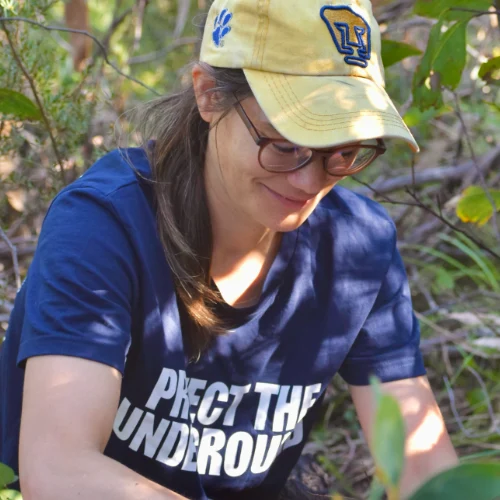
Exploring the underground networks of the Simpson Desert
Australia
2025

Exploring the underground networks of the Simpson Desert
Camille Truong
Australia
Cohort:
2025
project abstract
In central Australia, the Simpson desert is composed of parallel sand dunes that run for hundreds of kilometers. It has the particularity to encompass a network of rivers that originate in subtropical regions with high rainfall and penetrate into the dune fields from the North. Oncoming floods create the largest ephemeral wetlands in arid Australia, bringing water and sediments that contribute to soil fertility and dune formation. These exceptional conditions engender a relatively luxuriant vegetation compared with other arid regions that receive similar rainfall. While most plant species in the Simpson desert associate with arbuscular mycorrhizal fungi, Acacia and Eucalyptus shrubs that colonize interdunal corridors and riparian habitats can form mycorrhizal associations with ectomycorrhizal fungi, including iconic desert truffles. There is mounting evidence that drought conditions provoke plant nutrient deficiencies and that mycorrhizal fungi improve plant drought tolerance, but knowledge on mycorrhizal associations from arid regions is limited. We aim at filling this gap by establishing baseline knowledge of mycorrhizal diversity across landscapes in the Simpson Desert. We hypothesize that arbuscular mycorrhizal diversity is generally low and structured based on habitat type across the dune-interdune sequence, while riparian habitats within the desert are a source of ectomycorrhizal diversity.

Mycobiome diversity of coastal dune ecosystems in barrier islands in South Texas bays
Barrier Islands, South Texas bays, Gulf of Mexico region
2023

Mycobiome diversity of coastal dune ecosystems in barrier islands in South Texas bays
Candice Lumibao
Barrier Islands, South Texas bays, Gulf of Mexico region
Cohort:
2023
project abstract
The coastal dune ecosystems of the barrier islands along South Texas bays in the northern Gulf of Mexico provide important ecosystem services such as wildlife habitat and serve as the first line of defense against hurricanes and sea level rise. They represent a unique system as the South Texas estuaries and bays surrounding the barrier islands lie along a gradient of salinity (from 8 ppt to 40 ppt) but are considered at-risk ecosystems as they are also subject to different degrees of natural and anthropogenic degradations including oil pollution. It is an ideal system to study the mycobiome diversity of the ecoregion as it can serve as a space-for-time substitution of environmental change impacts on belowground fungal communities. Our project aims to assess the diversity of mycorrhizal communities (and soil mycobiome) in coastal dune ecosystems of barrier islands and how the environment and any concomitant changes shape these communities. Insights gained from the study can help inform conservation of underground communities and coastal management, and potentially aid in nature-based solutions for conservation and rehabilitation of barrier island habitats.

Accidental restoration underground: How have AMF communities changed during succession from abandoned farmlands to tropical dry forest?
El Salvador
2025

Accidental restoration underground: How have AMF communities changed during succession from abandoned farmlands to tropical dry forest?
Carlos Aguilar Trigueros
El Salvador
Cohort:
2025
project abstract
Our project aims to understand how fungal communities bounce back in restored tropical dried tropical forest in El Salvador (Central America). Dried tropical forest are one of the most endangered ecosystems in the Neo-tropics due to their suitability for agriculture and urban expansion. However, in El Salvador, several patches of forest have resurged in the last 30 years as a result of changes in land use. The outcome of this process is a mosaic of restored forest with different ages. We will sample soil in these forests and, will determine whether the changes in vegetation match changes in fungal communities across these patches.
Photo by Roberto Peña on Unsplash

Diversity of arbuscular mycorrhizal fungi in an ancestral farming system in the Desierto del Monte
La Rioja, Argentina
2024

Diversity of arbuscular mycorrhizal fungi in an ancestral farming system in the Desierto del Monte
Carolina Rothen
La Rioja, Argentina
Cohort:
2024
project abstract
In the Department of Castro Barros (Province of La Rioja, Argentina) there is an ancestral form of cultivation that is still alive today. There, farmers have a deep knowledge of the environment that, together with their hereditary soil management practices, make possible the cultivation of corn and squash in the driest areas of the Monte Desert. This project proposes to study the diversity of arbuscular mycorrhizae present in this ancestral form of cultivation and in the surrounding Desierto del Monte. Our hypothesis is that these agroecosystem management practices conserve a high diversity of arbuscular mycorrhizal fungi. The results obtained will demonstrate the precious knowledge of these farmers to achieve regenerative agriculture in the desert, and value for society the products they obtain free of chemical inputs.
Photo by Darío Bonzi on Unsplash

Sea to Summit: Mycorrhizal mediation of marine-derived nutrients from salmon returns to culturally plants in temperate rainforests of Lingít Aaní in southeast Alaska
Alaska
2024

Sea to Summit: Mycorrhizal mediation of marine-derived nutrients from salmon returns to culturally plants in temperate rainforests of Lingít Aaní in southeast Alaska
Caroline Daws
Alaska
Cohort:
2024
project abstract
In the coastal temperate rainforests of the Tongass National Forest, one of the largest migrations of biomass from sea to land occurs as Pacific salmon return to their home rivers to spawn. Salmon bring an immense flux of marine-derived nutrients into the terrestrial system, nourishing animals, forests, and the Lingít people for thousands of years. Such an intense annual nutrient pulse can quickly increase plant-available nutrients, but evidence is mixed on how those nutrient inputs affect terrestrial plant community composition. Despite the importance of mycorrhizal and saprotrophic fungi in mediating nutrient cycling, even less is known about how fungi are affected by marine-derived nutrients from salmon returns. The main purpose of this project is to understand how salmon nutrient inputs in coastal temperate rainforests affect soil microbial communities and how those microbes might affect plant community composition in a changing climate. In particular, we will focus on the abundance and diversity of mycorrhizal fungi that associate with culturally important and vulnerable plants such as Yellow cedar, hemlock, and several types of berries. Ultimately, this study will yield key insights into the microbial role of marine-derived nutrient cycling in these highly productive old growth forests.
Photo by Elly Furlong on Unsplash

Investigating below-ground mycorrhizal fungi for landscape restoration in highlands miombo woodlands of Burundi
Buhunyuza and Isale Provinces, Burundi, Central eastern Africa
2023

Investigating below-ground mycorrhizal fungi for landscape restoration in highlands miombo woodlands of Burundi
Chabi Bogo Taïbatou
Buhunyuza and Isale Provinces, Burundi, Central eastern Africa
Cohort:
2023
project abstract
The project is titled "Study of Underground Mycorrhizal Fungi for Landscape Restoration in the Miombo Highlands of Burundi.”. The project aims to generate high-quality data on the belowground diversity of ectomycorrhizal fungi in miombo forests. Sampling will be conducted precisely in the provinces of Buhunnyuza and Isale. Fieldwork will include various tasks such as collecting soil and root samples and conducting surveys of planters. All of this work will be documented using GoPro cameras. A soil subsample will be utilized for DNA metabarcoding, while another will be used to assess AMF spore density and abundance. Soil subsamples will be stored at -80°C until we begin lab work. Fine root samples will be sampled and preserved in ethanol to document and illustrate ECM dependency ratios. Project outputs will elucidate the links between native trees and the diversity of ECM fungi and will support the efforts of local communities to restore the landscape from these native forest species.

Impact of Forest Expansion on Soil Fungal Community Composition in Alpine Ecosystems of the Eastern Himalaya, Bhutan
Laya and Lhuentse, Bhutan
2024

Impact of Forest Expansion on Soil Fungal Community Composition in Alpine Ecosystems of the Eastern Himalaya, Bhutan
Chandra Man Rai
Laya and Lhuentse, Bhutan
Cohort:
2024
project abstract
The alpine ecosystems in the Himalayan region are critical for regulating water resources, preserving biodiversity, storing carbon, and providing essential habitats for unique flora and fauna, crucially supporting the livelihoods of millions of people. However, the encroachment of forests into these high-altitude alpine regions poses a severe threat, disrupting their delicate balance and jeopardizing the ecological services they provide, including below biodiversity. Through the SPUN grant, this study investigates the impact of forest expansion on belowground biodiversity, particularly the soil fungal community, across three alpine ecosystems in Bhutan's Eastern Himalaya. The expansion of forests has created a significant forest-alpine ecotone, allowing us to compare fungal communities in the forest, ecotone, and alpine zones. Forest encroachment not only has ecological ramifications but also profound social implications, as these ecosystems are crucial alpine rangelands for livestock, sustaining pastoral communities' livelihoods. Therefore, this study also explores the social impacts of forest expansion into these alpine rangelands. By addressing these dual ecological and social dimensions, this research seeks to provide a comprehensive understanding of the consequences of forest expansion in alpine ecosystems, aiding in the formulation of sustainable conservation and management strategies.
Photo by Aaron Santelices on Unsplash

Orchid-fungi specificity in endemic orchid species from central coast of Chile
Coastal area of central Chile
2023

Orchid-fungi specificity in endemic orchid species from central coast of Chile
Cristian Atala Bianchi
Coastal area of central Chile
Cohort:
2023
project abstract
Central Chile is part of a global biodiversity hotspot. This Mediterranean ecosystem includes many endemic sclerophyllous plants. It’s currently threatened since it is the most densely-populated area of the country and an agriculture center. This area has the highest diversity of vascular plants, and is the center of diversity of some genera such as the orchid genus Chloraea. Some Chilean orchid species are critically endangered and urgent actions are needed to ensure their long-term conservation. Chilean orchids are terrestrial and associate with mycorrhizal fungi (usually Rhizoctonia-type) that are key for their germination and their subsequent growth and survival. To establish propagation, conservation and restoration programs of Chilean orchids, a full understanding of the diversity and distribution of their fungal partners is required. In particular, we require an understanding of orchid-fungi specificity, since rare and/or endangered orchids could be restricted by the presence of specific orchid fungi in the soil. In this project, we aim to understand the diversity of mycorrhizal fungi in the soil close to different orchid species found in a latitudinal gradient in Central Chile and to compare this diversity with the fungal species that can be found inside the root system of the plants.
Photo by Olga Stalska on Unsplash

Mycorrhizal mapping to conserve tropical rainforest ecosystems in Southwest Nigeria
Oba Hills Forest Reserve (Osun State) and Oluwa Forest Reserve (Ondo State), Nigeria
2024

Mycorrhizal mapping to conserve tropical rainforest ecosystems in Southwest Nigeria
Damilola Olanipon
Oba Hills Forest Reserve (Osun State) and Oluwa Forest Reserve (Ondo State), Nigeria
Cohort:
2024
project abstract
Southwest Nigeria is a part of the Guinean forests of West Africa and a biodiversity hotspot consisting of tropical rainforest, mangrove forests, highland forests and sacred groves. The dense vegetation of various canopy layers these forest favourable habitats for various fauna ranging from animals like chimpanzees, monkeys and birds to microbial populations such as mycorrhizal fungi and bacteria species. However, a few of these ecosystems are currently been protected by local communities due to their species richness and endemism. These special features therefore present these forest ecosystems as key subjects in biodiversity conservation and management studies. Southwest Nigeria consists of six major states – Ekiti, Ondo, Osun, Ogun, Oyo and Lagos. In our previous research, we focused on mapping Arbuscular Mycorrhizal Fungi (AMF) communities across both roots and soils in a forest reserve in Ekiti State to identify plant-fungal interaction networks. Our preliminary results identified AMF species belonging to the families Glomeraceae, Acaulosporaceae, Gigasporaceae, Diversisporaceae, Ambisporaceae and Paraglomeraceae to be associated with soils and tree species in a tropical rainforest forest in Ekiti State. The study further indicated that there is a network of mycorrhizal sharing among tree species. Consequently, the SPUN Underground Explorer grant will determine how mycorrhizal fungi community diversity and structure differ in two other states, Ondo and Osun States. Specifically, we will employ the established sampling protocol of SPUN, molecular analyses of soil and root samples and metabarcoding of the 18S SSU rDNA region to characterize mycorrhizal fungal communities in the study sites. Furthermore, we will identify the plant species lost in degraded areas of the forests compared to pristine areas and how mycorrhizal diversity and abundance will differ along different elevation gradients (uplands and lowlands) of the forest ecosystems. Our project specifically addresses the sustainable development goals; hence we will enlighten the local communities, both the male and female genders on the following aspects i.e. SDGs – 11 (sustainable use of forest communities); 14 (influence of mycorrhiza networks in climate regulation, nutrient cycling and ecosystem stability) and 15 (combating deforestation, halting land degradation and loss of biodiversity such as plant and soil microbes). Local communities will be trained to understand more about mycorrhizal fungi and soil sampling protocol and emphasis will be placed on the roles of mycorrhizal in Earth’s ecosystem and in forest conservation, whilst also campaigning against over-exploitation of forest resources. To facilitate learning, poster, hand bills and other pictorial representations/videos on sampling protocols and relevance of mycorrhizal fungi to ecosystem stability and balance will be employed. These activities are aimed towards community-based conservation initiatives and stewardship over the forest sites.
Photo by HisArt Photos on Unsplash

Mycorrhizal Networks in the World's Oldest Man-Made Forest
Pakistan
2025

Mycorrhizal Networks in the World's Oldest Man-Made Forest
Daniyal Gohar
Pakistan
Cohort:
2025
project abstract
Changa Manga Forest in Punjab, Pakistan—one of the world’s oldest and largest man-made forests—offers a unique opportunity to investigate mycorrhizal fungal networks in a historically altered yet ecologically complex landscape. Despite their critical role in nutrient cycling, plant health, and ecosystem stability, mycorrhizal communities in man-made forests, particularly in South Asia, remain poorly understood. This project addresses a key knowledge gap by examining how anthropogenic disturbance and plant species composition shape mycorrhizal diversity and structure. The project aims to test two hypotheses: (1) that mycorrhizal diversity declines with increased human impact, and (2) that native plant species support more diverse fungal communities than exotic species. Soil samples will be collected along biodiversity gradients using standardized protocols and analyzed via Illumina MiSeq sequencing of the fungal ITS rDNA region to produce high-resolution profiles of community composition. Findings from this study will provide valuable insights into the ecological functioning of soil fungal networks in human-managed systems and their potential role in forest restoration and resilience. Beyond scientific outcomes, the project will foster local collaborations, build research capacity, and promote biodiversity awareness. The results will inform conservation strategies in Pakistan and contribute to broader global efforts to understand and protect underground microbial diversity.
Photo by Muhammad Khubaib Sarfraz on Unsplash

Microbial diversity along climatic gradients in alpine region of Western Himalaya
Himachal Pradesh, India (in Western Himalaya)
2023

Microbial diversity along climatic gradients in alpine region of Western Himalaya
Dinesh Thakur
Himachal Pradesh, India (in Western Himalaya)
Cohort:
2023
project abstract
High elevation regions are unique in their biodiversity and are among the ones facing the highest rate of climate change. This change is causing many irreversible changes in high elevation ecosystems necessitating the elucidation of unique biodiversity present there. This project aims to test for the effect of temperature and precipitation on mycorrhizal diversity by using natural climatic gradients in Western Himalaya as proxy for climate. Along with the effect of climate, we will also test how plant diversity and plant traits influence mycorrhizal diversity. To fulfill the project aim, we plan to sample a total of 25 localities in western Himalayan region. These localities will represent a factorial combination of temperature and precipitation. To estimate mycorrhizal diversity, 2.5 kb fragment of rDNA will be sequenced. We will involve local people and researchers from Himalayan region during the project work. We expect to generate at least one scientific publication in a peer-reviewed ecological journal. The outputs of the project will be disseminated to the scientific audience as well as the general public for its maximum impact. All the datasets generated during this project will be open access for everyone to use after publication.
Photo by DINESH BOCHARE on Unsplash

An Integrated Approach to Advancing Knowledge on Lactfluus caatingae (Basidiomycota, Russulales), an Endangered Brazilian Milkcap
Brazil
2025

An Integrated Approach to Advancing Knowledge on Lactfluus caatingae (Basidiomycota, Russulales), an Endangered Brazilian Milkcap
Diogo Rezende
Brazil
Cohort:
2025
project abstract
Understanding the biology of threatened species is key to addressing the current biodiversity crisis. This project aims to expand biological and ecological knowledge of Lactifluus caatingae, a rare ectomycorrhizal fungus known only from the Caatinga region of Brazil and currently listed as Endangered on the IUCN Red List. We will conduct field expeditions in the type locality and environmentally similar areas to locate sporomes, identify host plants, map the species’ distribution, and evaluate threats to its survival. In parallel, environmental DNA (eDNA) from soil and root samples will be analyzed using a metabarcoding approach to detect the presence of L. caatingae and uncover its mycorrhizal associations. The data generated will refine our understanding of the species’ distribution and ecological interactions, potentially informing a reassessment of its conservation status. In light of recent Brazilian policies that incorporate fungi into National Red Lists, these findings could support its inclusion in national conservation strategies. Furthermore, the use of high-quality eDNA data will enhance broader knowledge of soil fungal diversity in underexplored areas of the Brazilian semiarid, contributing to conservation efforts in one of the most threatened ecosystems in the tropics.
Photo by Charles Betito Filho on Unsplash

Diversity of arbuscular mycorrhizal fungi associated with floristic resources in six ecosystems of Mount Cameroon and Bioko montane forests.
Mount Cameroon (Cameroon) and Bioko (Guinée Equqtoriale)
2023

Diversity of arbuscular mycorrhizal fungi associated with floristic resources in six ecosystems of Mount Cameroon and Bioko montane forests.
Dr. Dejuani Astride Carole
Mount Cameroon (Cameroon) and Bioko (Guinée Equqtoriale)
Cohort:
2023
project abstract
The mountain forests of Mount Cameroon and Bioko belong to the volcanic chain that extends northwards along the border between Cameroon and Nigeria, and south-westwards to the islands of São Tomé, Príncipe, and Annobón, and extends to the heights of the island of Bioko Bioko (Equatorial Guinea). The western slope of Mount Cameroon is probably the most diverse and richest area of the mountain and is the only area in West and Central Africa where there is a pristine gradient vegetation of lowland evergreen tropical forest that starts at sea level, crosses montane forests, mountain meadows and alpine meadows near the summit. This link between ecosystems is the main source of the area's great biological diversity. Six main vegetation types have been identified on the mountain. Lowland rainforest (0-800 m above sea level), sub-mountain forest (800-1600 m above sea level), mountain forest (1600-1800 m above sea level), mountain thicket (1800-2400 m above sea level), mountain meadow (2000-3000 m above sea level), and sub-alpine meadow (3000-4100 m above sea level). The general objective of this project is to determine the diversity of mycorrhizal fungi associated with the diversity of the dominant floristic resources of Mount Cameroon. However, this study focuses on answering questions such as; Do the different forest ecosystems of the montane forests of Mount Cameroon and Bioko have the same types of mycorrhizal fungi? Does the floristic diversity of the soil types of each forest ecosystem determine the types of arbuscular mycorrhizal fungi present? Do anthropogenic activities carried out in this area have an impact on the diversity of arbuscular mycorrhizal fungi? Our commitment to this project also involves local communities. In line with the sustainable development objectives, we will focus on: - Educating local communities about the use of CMAs and their importance in agricultural production through videos and explanations in local languages (SDG - 4 and SDG -2). - Show them the impact of their various anthropogenic activities on the life of soil mycorrhizal fungi, while highlighting their responsibility for biodiversity conservation (SDG -12). - Men and women from local communities will be educated together, without distinction and priority (SDG -5).
Photo by Edouard TAMBA on Unsplash

Fungal Community Changes Associated with California Grassland Conversion
Central Valley, California
2023

Fungal Community Changes Associated with California Grassland Conversion
Edith Lai
Central Valley, California
Cohort:
2023
project abstract
In California, the Central Valley region once sprawled with lush grasslands of perennial bunchgrasses and endemic forbs unique to a Mediterranean climate region. However, colonization and subsequent urbanization have significantly altered this precious ecoregion. Sites across the landscape have experienced compounded threats from overgrazing, drought, fire regime change, and particularly intense invasion by European species. Current conservation actions include protecting remaining habitats, improving management, and, if possible, converting land to restored grasslands. This project aids these efforts through the investigation of how the soil microbial community has changed along an invasion gradient. For instance, associations with fungal symbionts could confer competitive advantages or cause diseases in the recipient community that contribute to invasion success. We will learn more about how fungi are participating in landscape change either as a consequence or conduit of grassland invasion.
Photo by Marek Okon on Unsplash

Exploring impacts of grassland restoration on the arbuscular mycorrhizal fungi of Texas Hill Country
Austin, Texas, USA
2024

Exploring impacts of grassland restoration on the arbuscular mycorrhizal fungi of Texas Hill Country
Elena Leander
Austin, Texas, USA
Cohort:
2024
project abstract
On the eastern edge of Texas Hill Country, the intersection of the Edwards Plateau and Blackland Prairie ecoregions creates a hotspot of biodiversity and provides a home to a number of endemic species across trophic levels. It is here where the restoration efforts of the Hill Country Research Program take place in the Lady Bird Johnson Wildflower Center, Texas’s State Botanic Garden. For the past 23 years, land managers and researchers have leveraged prescribed fire and mowing treatments to address the spread of the invasive yellow bluestem (Bothriochloa ischaemum var songarica) and promote biodiversity within 75 acres of oak savanna. The resulting vegetation data has suggested the seasonality and frequency of these disturbances can have a significant impact on plant community composition and productivity (Ewing et al, 2005). Yet to be studied are the effects of restoration treatments on the associated arbuscular mycorrhizal fungi (AMF). Exploring the response of AMF communities within this system addresses a mechanistic link between disturbance and plant community recovery. The main goals of this study are to 1) identify the AMF unique to the calcareous glades and remnant prairies of the southern United States, and 2) explore how long-term restoration efforts impact the diversity and distribution of the ecoregions’ AMF communities.
Photo by Jessie Shaw on Unsplash

Restoring Underground Alliances: Mycorrhizal Fungi in Tallgrass Prairie Conservation and Restoration
USA
2025

Restoring Underground Alliances: Mycorrhizal Fungi in Tallgrass Prairie Conservation and Restoration
Elizabeth Koziol
USA
Cohort:
2025
project abstract
Threatened mycorrhizal communities of the tallgrass prairies: remnants, inoculants, and restorations
Photo by Brandon Stoll on Unsplash
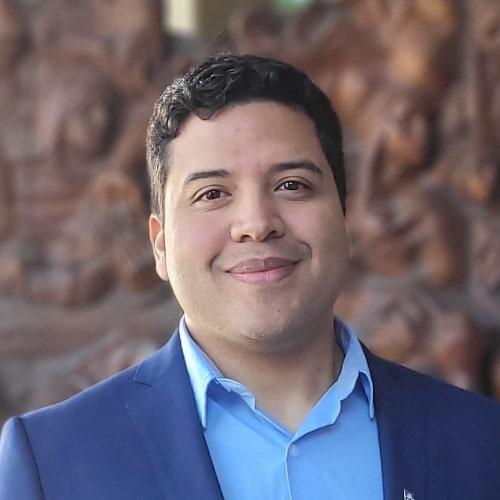
Redes Micorrícicas en Humedales de Altura: explorando hotspots de biodiversidad subterránea en la Puna Central
Argentina
2025

Redes Micorrícicas en Humedales de Altura: explorando hotspots de biodiversidad subterránea en la Puna Central

Exploring Fungal Diversity in Honduras: Conservation, Indigenous Collaboration, and Ecosystem Dynamics
Intibuca, Fransisco Morazan, La Moskitia, Olancho, Honduras
2023

Exploring Fungal Diversity in Honduras: Conservation, Indigenous Collaboration, and Ecosystem Dynamics
Evelin Yulisa Reyes Mendez
Intibuca, Fransisco Morazan, La Moskitia, Olancho, Honduras
Cohort:
2023
project abstract
Our project aims to investigate the variation and complexity of fungal communities in different geographical locations in Honduras; Wampusirpe, Gracias a Dios; Catacamas, Olancho; Tegucigalpa, Francisco Morazán y La Esperanza, Intibucá. By collecting 108 samples from four diverse sites, the study will employ 16S rRNA metabarcoding and ITS regions, using the Illumina MiSeq platform, to understand the fungal diversity in tropical rainforests, mountainous terrains, grasslands, and urban landscapes. The research emphasizes the relationship between land-use practices, ecological gradients, and fungal community structure. This in-depth exploration holds significant importance for understanding ecosystem dynamics and will contribute valuable information for strategies in sustainable agriculture, conservation, and land management. Collaboration with indigenous communities, insights into small-scale farming, and alignment with the mission of the Society for the Protection of Underground Networks (SPUN) are integral aspects of this vital ecological research as well as providing valuable data for global conservation initiatives.
Photo by Esteban Benites on Unsplash

Diversity of mycorrhizal fungal community along an altitudinal gradient: A study spanning from the Himalayan Foothills to the Indus Valley.
Pakistan
2025

Diversity of mycorrhizal fungal community along an altitudinal gradient: A study spanning from the Himalayan Foothills to the Indus Valley.
Farah Shafiq
Pakistan
Cohort:
2025
project abstract
Tallgrass prairies are among the most endangered ecosystems in North America, with less than 4% remaining. Their deep-rooted plants sustain biodiversity, store carbon, and protect soils, but the mycorrhizal fungi that underlie these functions are poorly understood. This project will characterize arbuscular mycorrhizal (AM) fungal communities in two old-growth remnant prairies and evaluate the persistence and benefits of prairie-derived inoculants in an eight-year restoration experiment. Using LSU and SSU rDNA sequencing and soil analyses, we will compare fungal composition, hyphal density, and soil health across remnant, inoculum, and restored plots. Results will test whether reintroducing native AM fungi improves soil structure, plant establishment, and ecosystem resilience. By linking remnant prairie diversity to field-scale restoration outcomes, this research will provide actionable guidance for restoring tallgrass prairies and contribute to global efforts to rebuild threatened mycorrhizal networks that sustain resilient ecosystems.
Photo by Mehtab Farooq on Unsplash

Mycorrhizal Diversity and dispersal in the South Indian Ocean Islands
Tropical and Sub-Antarctic Indian Ocean Islands
2024

Mycorrhizal Diversity and dispersal in the South Indian Ocean Islands
Francois de Vleeschouwer
Tropical and Sub-Antarctic Indian Ocean Islands
Cohort:
2024
project abstract
The French insular territories of the South Indian Ocean (“Subantarctic” and “Eparse” Islands) are among the most isolated habitats on Earth that are protected by the French government through the “Terres Australes et Antarctiques Françaises (TAAF, https://taaf.fr/), that greatly limit human impacts and biological introductions, and preserves the local and endangered flora and fauna. These volcanic islands emerged between 130 million and 700,000 years ago and shaped unique habitats such as coastal, tundra and peatland ecosystems, influenced by Tropical or Westerly Winds. On these islands, recent studies have revealed a majority of unclassified fungi but no mycorrhizal fungi has been sequenced yet, whereas observations have been made on several plants. Supported by the logistics of the French Polar institute (IPEV) and the TAAF, we will sample soils from various districts: Crozet, Kerguelen and Amsterdam islands in the Subantarctic sector, and Tromelin island in the Eparse sector, where fungal habitat diversityremains greatly unexplored. Our expert team focuses on mycorrhizal diversity but also atmospheric dust particles, allowing us to evaluate how far local diversity could be influenced by long distance dispersal and Westerly Winds crossing theSouthern Indian Ocean.

Effects of anthropic fires on the interaction networks between arbuscular mycorrhizal fungi and hawkmoth pollinated plants Chaco Serrano Forest
Córdoba, Argentina
2024

Effects of anthropic fires on the interaction networks between arbuscular mycorrhizal fungi and hawkmoth pollinated plants Chaco Serrano Forest
Gabriel Grill
Córdoba, Argentina
Cohort:
2024
project abstract
Biodiversity and ecosystem functioning on a global scale are being strongly affected by human activities in the Anthropocene. In this context, it has been proposed that intentional fires can be significant promoters of ecosystem degradation. Anthropic fires, as part of land use changes, cause modifications in the structure of interaction networks. Disturbed sites where vegetation and other organisms are removed by fire can alter plant interactions with organisms both above and below the soil. Arbuscular mycorrhizal fungi (AMF) colonize the roots of approximately 80% of terrestrial plants and play a crucial ecological role in relation to the demographic patterns of plant species by aiding in the colonization of sites during early successional stages or enabling invasive plant species to colonize new ecosystems. Additionally, they are involved in numerous above-ground ecological processes of plants, such as pollination through their influence on flower production. However, interaction networks between plants, pollinators, and fungal symbionts are poorly studied, and even less so have the changes in these bipartite plant-pollinator and plant-AMF networks been evaluated in the same study in response to a disturbance. Therefore, it is unknown what happens to the structure of the two bipartite interaction networks (plant-AMF and plant-pollinator) in a region subjected to anthropic pressures like the Chaco Serrano. In this study, we propose to evaluate the influence of land use changes (i.e., intentional fires) on the interaction networks between moth-pollinated plants ("sphingophilous plants"), their AMF, and their sphingid pollinators in the Chaco Serrano forest.
Photo by Dámaris Azócar on Unsplash

Exploring the effects of multiple global change factors and restoration practices on arbuscular mycorrhizal fungal communities in a temperate grassland
China
2025

Exploring the effects of multiple global change factors and restoration practices on arbuscular mycorrhizal fungal communities in a temperate grassland
Gaowen Yang
China
Cohort:
2025
project abstract
The cooccurrence of global change factors (GCF), e.g., overgrazing combined with drought and climate changes, is a main reason leading to degradation of local grassland. We have conducted a two-factor experiment. One factor is an increasing number of GCFs, with 0, 1, 2, 4, 6 GCFs, following our previous study (Rillig et al. 2019, Science). Another factor is the practice of soil transfer and reseeding native species. There are 144 plots in total. We will test (1) an increasing number of global change factors will lead to the loss of AMF diversity and a decrease in abundance but will select those slow-growing taxa with high resistance; (2) a combined restoration of vegetation and soil communities can enhance the resistance AMF communities to multiple global change factors.
.jpg)
Molecular identification of arbuscular mycorrhizal fungi associated to Byrsonima crassifolia (L.) Kunth in San Martín, Peru
Amazonas (San Martín), Peru
2024

Molecular identification of arbuscular mycorrhizal fungi associated to Byrsonima crassifolia (L.) Kunth in San Martín, Peru
Geomar Vallejos-Torres
Amazonas (San Martín), Peru
Cohort:
2024
project abstract
These forests have not been explored and are located between the provinces of San Martin and Lamas. The indano tree, although of high commercial value, has decreased in number and only a few individual patches remain, which are important for reforestation programs. However, these forests have been affected by deforestation, land use change, and loss of endemic species. The Peruvian Amazon has seven main soil types, with ultisols being the most common. Arbuscular mycorrhizal fungi have been observed to be tolerant of drought and soil acidity conditions. However, the biodiversity of these fungi in the Amazon basin has not been studied. It is hypothesized that there are significant differences in the diversity and structure of these fungi in trees of B. crassifolia in San Martín, Peru, both as a function of size and altitude.
.jpg)
Análisis de la diversidad de hongos micorrízicos arbusculares en diferentes usos de suelos en ecosistemas agroforestales en la amazonia peruana
Peru
2025

Análisis de la diversidad de hongos micorrízicos arbusculares en diferentes usos de suelos en ecosistemas agroforestales en la amazonia peruana
Geomar Vallejos-Torres
Peru
Cohort:
2025
project abstract
La propuesta de investigación consistirá en analizar la diversidad de hongos micorrízicos arbusculares en diferentes usos de suelos en ecosistemas agroforestales en la amazonía peruana, lo que se pretende es descifrar cuál es el impacto del uso de suelo en la diversidad, abundancia y caracteres de hongos micorrízicos arbusculares en los ecosistemas de cacao, café y bosque tropical. Se dará inicio con la identificación de ecosistemas de cacao y café como monocultivo, en sistemas agroforestales y con árboles de inga sp. Asimismo, se identificarán ecosistemas de bosque primario, secundario y bosque deforestado. En este proceso de investigación tomaremos submuestras de 100 a 200 gramos y se trabajará en el Laboratorio de genética molecular de la Universidad Nacional Toribio Rodríguez de Mendoza gracias al convenio con la Universidad Nacional de San Martín. En seguida se extraerá el ADN a partir de las muestras de suelo y utilizaremos controles negativos secuenciados. Alternativamente, usamos el Nanodrop para cada muestra de ADN. En tanto, el secuenciamiento de ADN se realizará en The Scripps Research Institute, California EEUU.
Metabarcoding of Arbuscular Mycorrhizal Fungi (AMF) Communities Endemic to the Rhizosphere of the Argan Tree (Argania spinosa (L.) Skeels) Forestlands: Focus on Southwest Moroccan Forest Ecosystems
Essaouira and Agadir, Morocco
2024

Metabarcoding of Arbuscular Mycorrhizal Fungi (AMF) Communities Endemic to the Rhizosphere of the Argan Tree (Argania spinosa (L.) Skeels) Forestlands: Focus on Southwest Moroccan Forest Ecosystems
Grace Gachara
Essaouira and Agadir, Morocco
Cohort:
2024
project abstract
Mycorrhizal populations play pivotal roles in multiple ecosystem processes. Recent research has linked mycorrhiza strain types to specific functions such as biodiversity conservation, increased carbon sequestration, improved soil fertility and deposition of essential macronutrients. Investigation into arbuscular mycorrhizal fungal (AMF) diversity in any ecosystem, but especially forestland areas, is an important biological parameter that can be used to conduct assessment of environmental disturbances and inevitable climate stressors. The investigation of indigenous soil mycorrhizae, such as those endemic to the Argan forestlands of Morocco is urgently needed to help inform biodiversity conservation, ecosystem restoration, improvement of environmental tolerance to local conditions, low ecological risk and quick acclimatization to the harsh effects of climate change. This is because biodiversity and mutualistic partnerships among microbial organisms and plant hosts form the basis of stability and resiliency of most ecosystems.
Endemic to Morocco, the argan tree (Argania spinosa (L.) Skeels) is among the most important trees in Morocco. Research has shown argan forests confer multifaceted benefits, including the ability to preserve ecological stability, enhanced biodiversity conservation, minimized soil erosion, reducing desertification and high socio-economic value (due to the extraction of argan oil). However, the argan ecosystem continues to suffer from rapid and increased deterioration due to the devastating effects of climate change, anthropogenic activities and demographic pressures. Declared a UNESCO biosphere reserve, the arganeraie forestlands hold massive interest in Morocco. Yet, we lack studies of the role of AMF diversity and AMF community composition in Argan forestlands of Morocco. This proposed project aims at using emerging geospatial pipelines to map the mycorrhizal communities of Argan forestlands and determine their abundance, uniqueness (species and/or strains) and diversity. In particular, I am interested in levels of fungal endemism that are associated with this endemic tree. Previous research has shown that exploring local variants of AMF consortia and selecting high performance symbionts can greatly aid in restoration of degraded forestlands, improve biodiversity and conserve important ecosystems. However, we cannot utilize these local communities unless we understand who is there. Ultimately, my aim is to determine the diversity of AMF associated with Argan ecosystems through metabarcoding in order to protect underground mycorrhizal networks in southwest regions of Morocco, especially those in the edapho-climatic zones. It is anticipated that this study will culminate in the generation of qualitative data related to the distribution patterns of specific taxa of these AMFs, which is crucial when it comes to determining the functional roles, specificity of symbiotic relationships and species co-occurrence within the arganeraie tree ecosystem.
Photo by Louis Hansel on Unsplash

Soil fungal communities in sections of Mt Kenya forest under contrasting management regimes
Kenya
2023

Soil fungal communities in sections of Mt Kenya forest under contrasting management regimes
Hannah Karuri
Kenya
Cohort:
2023
project abstract
Soil biodiversity plays a key role in provision of ecosystem services. Conservation of soil organisms and their inclusion in policy agendas is imperative. The Mt. Kenya forest is a biodiversity hotspot but the diversity of most soil biota is unexplored. Mycorrhizal fungi are a key component of forest ecosystems and they influence different biogeochemical processes. This project will compare the diversity of mycorrhizal fungi in protected and unprotected areas within the Mt. Kenya forest. It will provide an insight on the status of mycorrhizal fungi and contribute to the conservation and monitoring of soil biodiversity.
Photo by David Clode on Unsplash

Ectomycorrhizal fungal communities in the eastern wallace line
Gandang Dewata National Park, West Sulawesi, Indonesia
2023

Ectomycorrhizal fungal communities in the eastern wallace line
Helbert Lim
Gandang Dewata National Park, West Sulawesi, Indonesia
Cohort:
2023
project abstract
To this date, most of the information about ectomycorrhizal (ECM) fungi in Indonesia has been generated from the western part of Wallace (Sumatra, Java, and Borneo). Meanwhile, in the eastern Wallace region (Sulawesi, the Moluccas, Papua), the information is limited. Within the project “Ectomycorrhizal fungal communities in the eastern Wallace line,” our aim is to generate a list of ECM species in Gandang Dewata, West Sulawesi, Indonesia, based on DNA information. The ITS Region and LSU will be used for metabarcoding, and Illumina Sequencing will be the chosen Sequence Platform. Additionally, we will gather more information related to the ecology of these ECM fungi by assessing their hosts and the existing above-ground fruiting bodies (mushrooms). New species, new records, and new collections could be obtained from this project.

Diversidad de hongos micorrícicos en el bosque seco de garachiné, Darién, República de Panamá
Panamá
2023

Diversidad de hongos micorrícicos en el bosque seco de garachiné, Darién, República de Panamá
Hilario Espinosa
Panamá
Cohort:
2023
project abstract
Tropical dry forests are unique ecosystems that are seldom studied. Currently they are under constant anthropogenic threats, such as deforestation and climate change. However, there is very little information about the mycorrhizal communities from these types of forests, partly because attention has focused largely on the most humid ecosystems. We will base our study on one of the last remnants of this type of forest located in the community of Garachiné, in the province of Darién, Panama. We will collect soil from the area and then apply molecular techniques to identify the mycorrhizae present. Our project is a collaborative effort with colleagues from the University of Panama who are developing botanical studies in the area, which will allow us to relate the mycorrhizal community with the flora typical of this type of ecosystem. Our results will allow us to know the diversity of mycorrhizae in an area never studied, as well as their possible relationships with the species of vascular plants present in the tropical dry forest. The information produced will help us motivate further research and the conservation of this unique Ecosystem.
Photo by Benedicto Menacho on Unsplash

Morphological diversity and interaction between Arbuscular Mycorrhizal Fungi (AMF) and plant in Kota Waterfall in Benin
Kota Waterfall, Benin
2024

Morphological diversity and interaction between Arbuscular Mycorrhizal Fungi (AMF) and plant in Kota Waterfall in Benin
Hyppolite Aignon
Kota Waterfall, Benin
Cohort:
2024
project abstract
Kota waterfall is an exceptional habitat located in northern Benin. In this locality, an oligotrophic flow coming from the Atakora range has dug into the quartzite granites and forms numerous stages which can reach around ten meters deep, over which the stream falls in cascades, surrounded by a riparian forest at evergreen leaves, in which Berlinia grandiflora (Vahl) Hutch. & Dalziel, Isoberlinia doka Craib & Stapf, I. tomentosa (Harms) Craib & Stapf, Uapaca togoensis Pax and Breonadia salicine (Vahl) Hepper and J.R.I., dominate and grow in the valleys of the ravine. The Kota waterfall, presents a riparian forest, structurally rich and natural due to the waterfall which makes the habitat humid throughout the year and the vegetation, makes Kota a reference site for mycological investigations as a hotspot of endemic fungal species in Benin. To highlight the fungal diversity hidden in the soil at Kota waterfall and their ecological importance, this project aims to (1) evaluate the diversity of Arbuscular Mycorrhizal Fungi (AMF) according to the health of the soil and (2) analyze the presence and density of mycorrhizal networks by highlighting how mycorrhizal associations evolve through the compositions of the plant community present. For our sampling, we will identify five microhabitats: Woodland, savannah, mixed dry forest, gallery forest and dense forest in this complex. In each microhabitat we will collect soil samples and DNA will be extracted from these samples, by targeting, amplifying and sequencing the SSU ribosomal RNA region using nested PCR approach. We expect that the remarkable diversity of flora within Kota reflects the subterranean microbial community of the habitats and that many previously unknown taxa can be found and identified. Indigenous peoples near to Kota waterfall are involved in this project.
Photo by Jeffrey Workman on Unsplash

Arbuscular mycorrhizal fungi diversity using omics across protected and non-protected montane grassland and shrublands in the Jos, plateau Nigeria
Jos Plateau forest-grassland, Nigeria
2024

Arbuscular mycorrhizal fungi diversity using omics across protected and non-protected montane grassland and shrublands in the Jos, plateau Nigeria
Ikwuakonam George Okoro
Jos Plateau forest-grassland, Nigeria
Cohort:
2024
project abstract
This research intends to determine the arbuscular mycorrhizal fungi diversity across the protected and unprotected montane grassland and shrubland of the Jos plateau. The Jos plateau covers about 8600 km2 and is bounded by 300 – 600 escarpments around its boundaries. It has an average altitude of 1280m. Its ecobiome is montane grassland and shrubland that is home to communities of plants and animals from the surrounding lowlands and constitutes the Jos Plateau Forest Savannah mosaic ecoregion. A total of 36 samples will be collected for arbuscular mycorrhizal fungi (AMF) DNA extraction. This will be followed by PCR and amplification of the ITS2 and SSU regions to identify arbuscular mycorrhizal fungi from the extracted soil genomic DNA. The rapid barcoding kit 98 V14 (SQK-RBK 114.96) will be used, enabling me to multiplex up to 96 samples. Sequencing will be done using the Illumina MiSeq platform for the metabarcoding samples. The importance of these data to be collected and ideas are to provide the actual representation of the area of study which will also be essential in making informed decisions and accurate inferences concerning the arbuscular mycorrhizal fungi diversity and interaction within the area of study. The research findings will be shared through peer reviewed scientific publications and reputable outreach media. My team members include an expert in mycorrhizal study (Soil microbiologist), geographer, final-year student of Forestry and a plant scientist. At the end of the research, we and the local communities will clearly understand the arbuscular mycorrhizal dynamics peculiar to their ecoregion. It will also suggest a suitable guide for restoring and sustaining the mycorrhizal interaction across the unprotected montane grassland and shrubland of the Jos plateau.
Photo by Ovinuchi Ejiohuo on Unsplash

Redemptive mycorrhizal fungi of the dried Aral Sea
Karakalpakstan, Uzbekistan
2024

Redemptive mycorrhizal fungi of the dried Aral Sea
Ilyor Mustafaev
Karakalpakstan, Uzbekistan
Cohort:
2024
project abstract
The desertification of the Aral Sea, once the fourth largest lake in the world, has resulted in ecological devastation in Central Asia. The exposed seabed and concentrated seawater, with their extremely high salinity even exceeding the level of Dead Sea, presents a unique challenge for vegetation restoration. Interestingly, still there are domestic halophytes successfully adapted and thriving in the region. With a wonderful support of SPUN, our enthusiastic research team from Uzbekistan Academy of Sciences led by Dr. Ilyor Mustafaev in collaboration with Dr. Soon-Jae Lee in University of Lausanne, start the first underground exploration of the Aral Sea. In this study, we investigate the soil fungal communities as well as mycorrhizal fungi which support plant growth in the dried-up regions of the Aral Sea. We aim to characterize the diversity of arbuscular mycorrhizal fungi and other soil fungi across different salinity gradients and habitats within the Aral Sea basin. Our fieldwork involves the collection of soil samples from various locations across the Aral Sea basin. We work closely with local collaborators to share the expertise in mycology, plant ecology, and molecular biology. Anticipated scientific outcomes will serve as essential assets for future research endeavors for local conservation efforts for Aral Sea. Our outreach efforts will disseminate findings to the local communities in Uzbekistan and adjacent countries through media articles and presentations at the Institute of Botany of the Academy of Sciences. This pioneering study will bring an important data for successful ecological modelling of belowground diversity in high salinity regions for further conservation and prevention of the ecosystem collapsing. Considering the expected more frequent drought all over the world, which will accompany the salinity stress for the terrestrial vegetation, the results of this project will have value not only for the case of Aral Sea, but also for whole globe.
Photo by Patrick Schneider on Unsplash

Mapping the Mycorrhizal Fungi of Armenia
Armenia
2023

Mapping the Mycorrhizal Fungi of Armenia
International Congress of Armenian Mycologists
Armenia
Cohort:
2023
project abstract
Co-PIs:
International Congress of Armenian Mycologists or ICAM: Claudia Victoroff-Bashian, Patricia Ononiwu Kaishian, PhD, Arik Joukhajian, Tania Kurbessoian, PhD
The International Congress of Armenian Mycologists (ICAM) are conducting a nation-wide survey of soil fungi across the mountainous Republic of Armenia, targeting unique microclimates from humid deciduous mixed forest to semi-desert ecosystems clustered across a small geographic range. The Caucasus region and southwest Asia are listed as highly important regions for fungal conservation (Dahlberg et al., 2010), but anthropogenic threats to the Armenian landscapes continue to increase. While travel to portions of the affected regions remains impossible or impractical, the imposing threat of warfare has created an extreme urgency for biodiversity surveys within adjacent ecosystems. Understanding the identities and distribution of fungi in this region is paramount for plant and fungal conservation, and to contribute to a global understanding of soil fungus biogeography, but few studies have occurred within the Southern Caucasus region and even fewer studies have occurred in Armenia relative to its neighbors. By comparing the species composition of fungi across a stark environmental gradient within the small geographic range of Armenia, this project will provide critical information on how biotic soil conditions impact the distribution of mycorrhizal fungi.
Photo by Ani Adigyozalyan on Unsplash

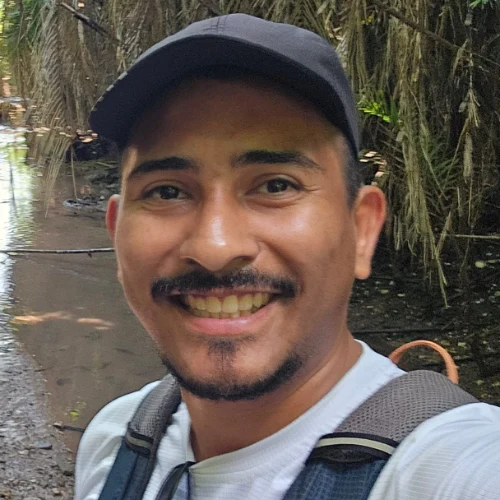
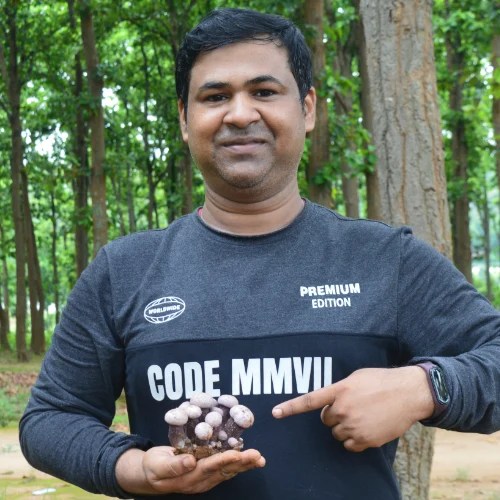
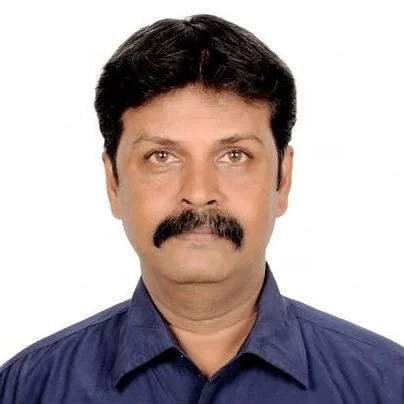
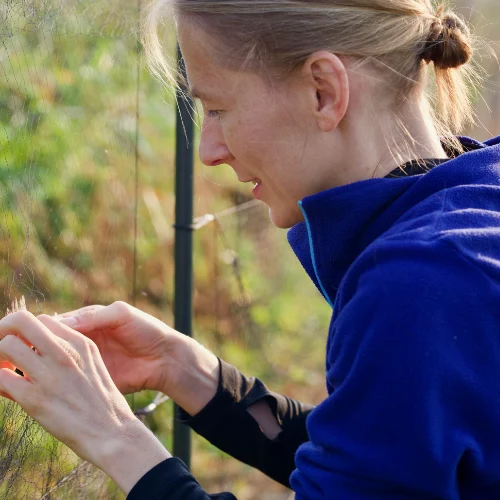

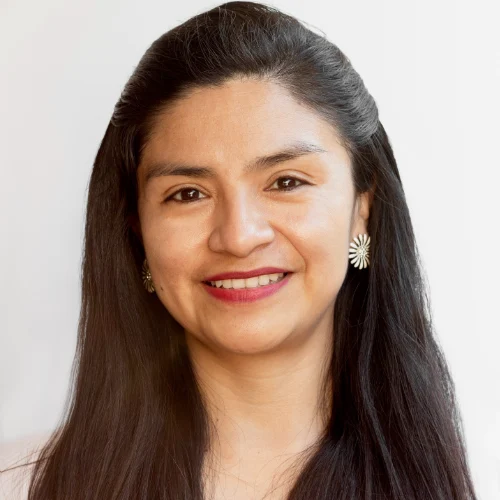

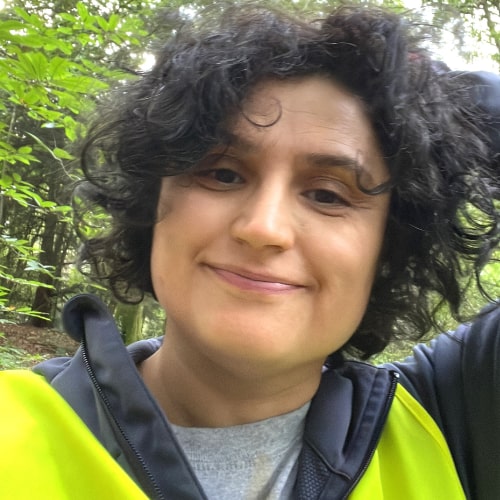
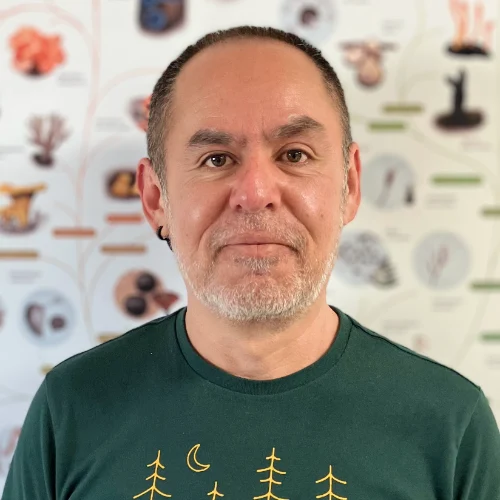

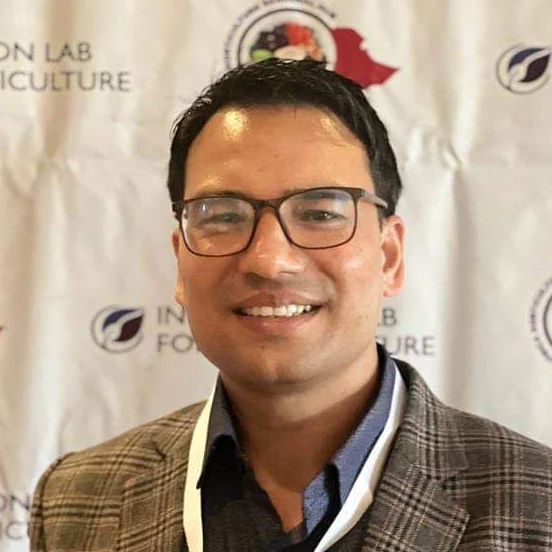
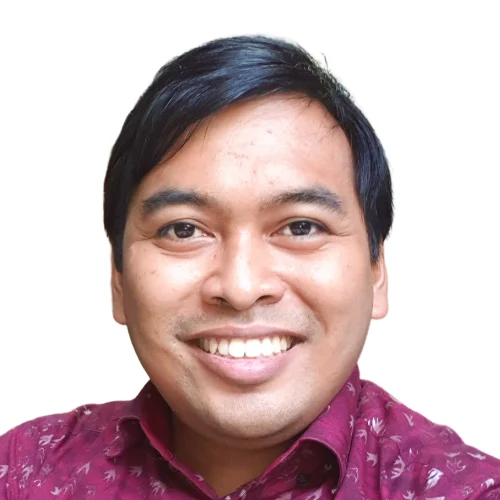
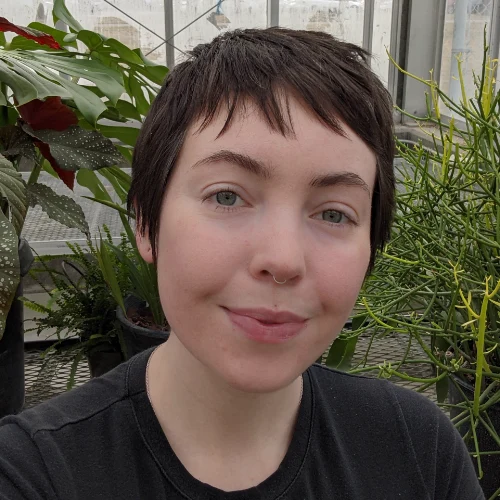
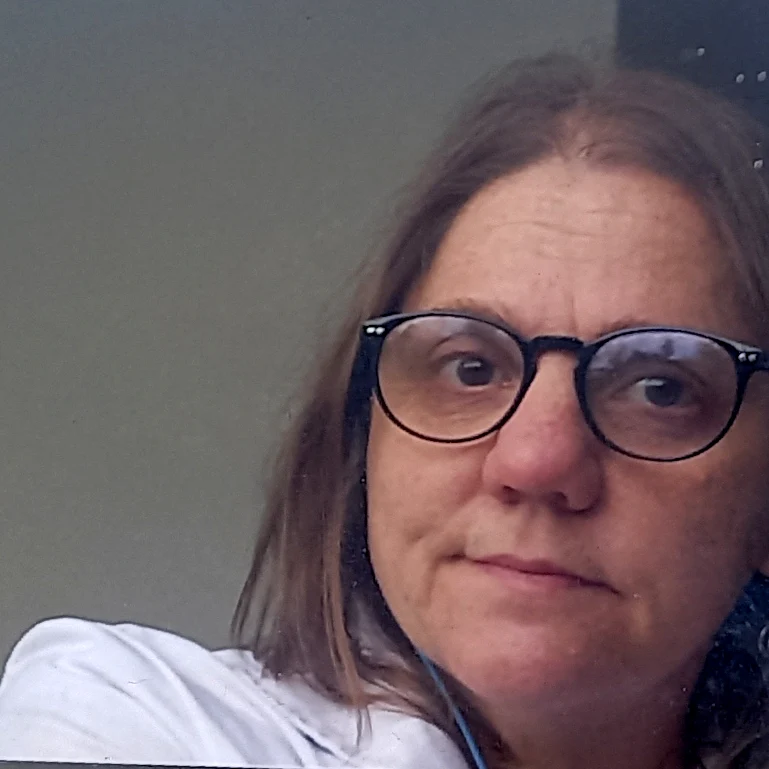
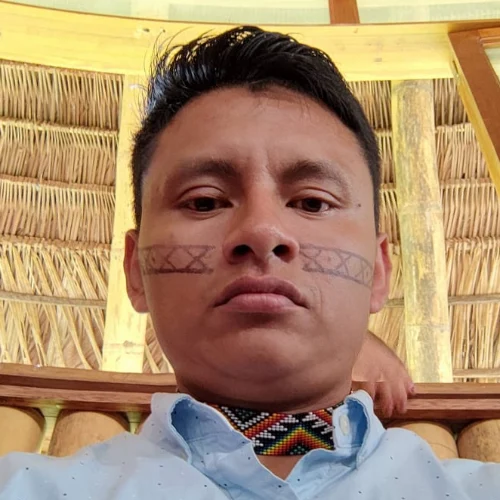
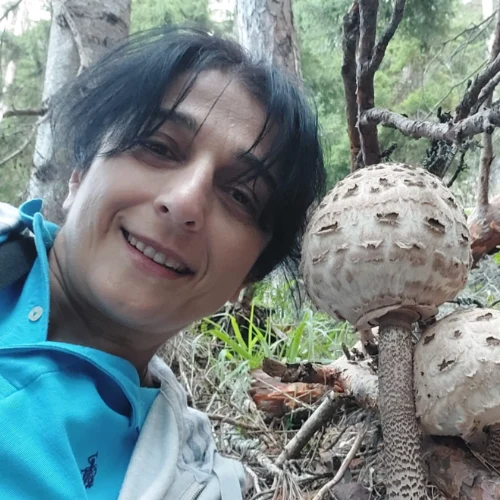




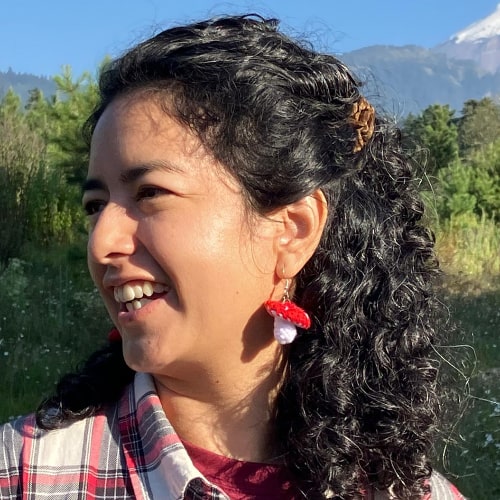

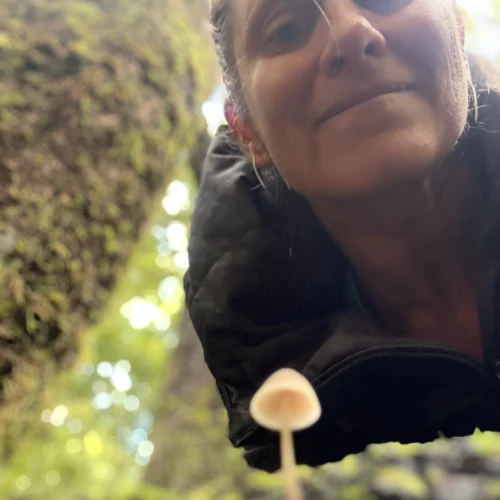
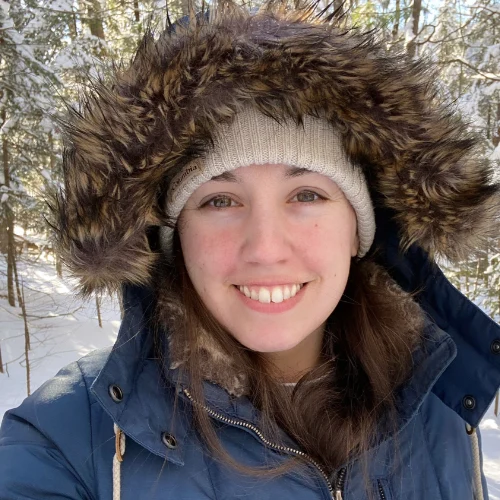
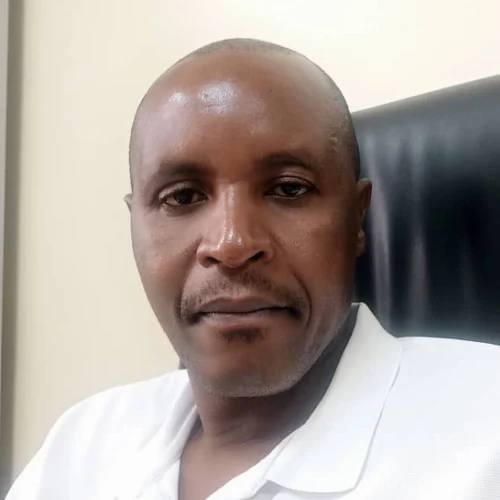









.jpg)
































.svg)


